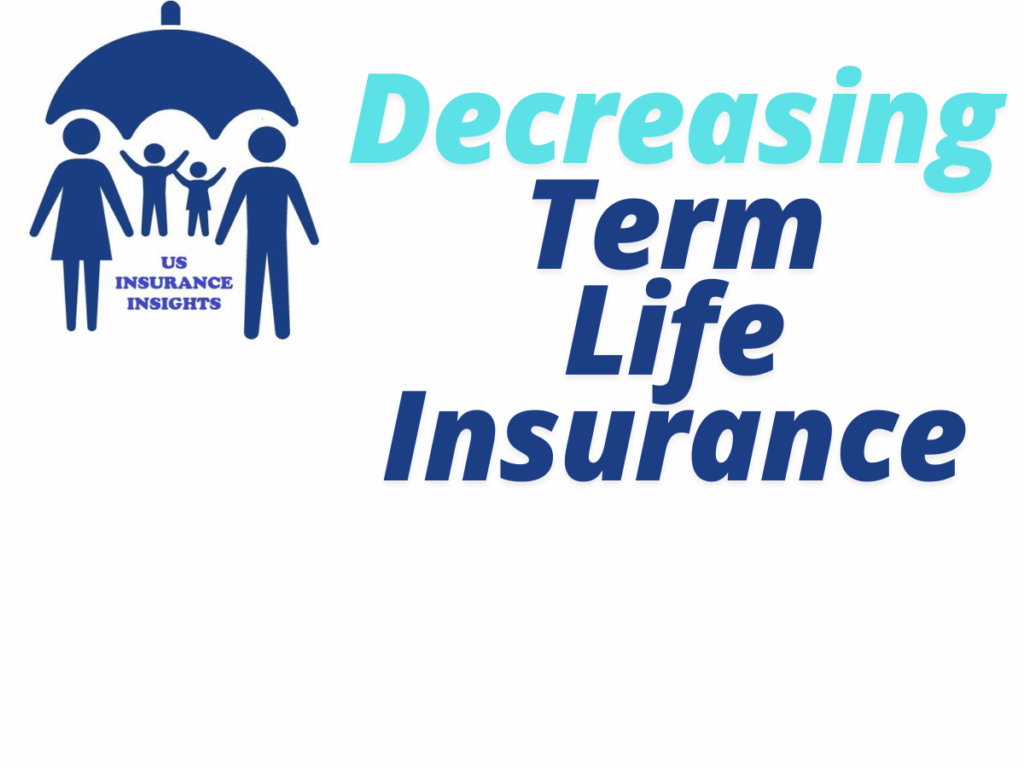Decreasing term life insurance is a practical and cost-effective way to ensure your loved ones are protected from specific debts, such as a mortgage, in the event of your untimely passing. This type of policy is designed to align with financial obligations that diminish over time, providing peace of mind without overpaying for unnecessary coverage.SmartAsset+10Forbes+10Diversified Insurance+10Western & Southern+1Forbes+1
Understanding Decreasing Term Life Insurance
Decreasing term life insurance is a policy where the death benefit decreases at a predetermined rate over the policy’s term, typically aligning with the reduction of a specific debt. Despite the decreasing coverage, premiums usually remain level throughout the policy duration. This structure makes it an affordable option for those looking to cover debts that decrease over time, such as mortgages or business loans .TrustedChoice.com+3Insuranceopedia+3Forbes+3Investopedia+1Western & Southern+1
How Does It Work?
When you purchase a decreasing term life insurance policy, you select a term length (e.g., 10, 15, 20, or 30 years) and an initial coverage amount. Over the term, the death benefit decreases, often annually or monthly, according to a schedule set by the insurer. This decrease typically mirrors the amortization schedule of the debt you’re aiming to cover. If you pass away during the policy term, your beneficiaries receive the death benefit corresponding to the policy’s current value Decreasing Term Life Insurance.InsuranceopediaInvestopediaBenzinga
Real-Life Scenario
Consider Sarah, a 35-year-old homeowner with a 20-year mortgage. She purchases a 20-year decreasing term life insurance policy with a death benefit that matches her mortgage balance. Each year, as she pays down her mortgage, the policy’s death benefit decreases accordingly. If Sarah were to pass away during the policy term, the death benefit would cover the remaining mortgage balance, ensuring her family can keep their home without financial strain. Decreasing Term Life Insurance
Benefits of Decreasing Term Life Insurance
- Affordability: Generally, decreasing term policies are more affordable than level term policies due to the decreasing risk to the insurer over time .Finance Strategists+5LegalClarity+5Western & Southern+5
- Debt Alignment: The decreasing death benefit aligns with the reduction of specific debts, ensuring you’re not over-insured.FasterCapital+1Forbes+1
- Simplicity: These policies are straightforward, with fixed premiums and a clear schedule of decreasing benefits.TrustedChoice.com Decreasing Term Life Insurance
- Targeted Coverage: Ideal for covering specific debts like mortgages, personal loans, or business loans.Benzinga+7Forbes+7FasterCapital+7
Potential Drawbacks
- Limited Flexibility: The policy is designed for specific debts and may not provide adequate coverage for other financial needs.LegalClarity Decreasing Term Life Insurance
- No Cash Value: Unlike whole life insurance, decreasing term policies do not accumulate cash value.Forbes+7Fidelity Life+7Investopedia+7 Decreasing Term Life Insurance
- Coverage Ends with Term: If you outlive the policy term, there’s no payout, and you may need to seek new coverage.Benzinga
Is Decreasing Term Life Insurance Right for You?
This type of insurance is well-suited for individuals with significant debts that decrease over time, such as:FasterCapital
- Homeowners: To cover the remaining mortgage balance.Investopedia+3Money to the Masses+3Forbes+3
- Business Owners: To protect against business loans or startup costs.spectruminsurancegroup.com+5Investopedia+5Western & Southern+5
- Parents: To ensure children’s education loans or other debts are covered.Policygenius+14Investopedia+14Investopedia+14
However, if you’re seeking broader coverage for various financial obligations or long-term dependents, a level term or whole life insurance policy might be more appropriate.spectruminsurancegroup.com+7Finance Strategists+7Western & Southern+7
Step-by-Step Guide to Purchasing Decreasing Term Life Insurance
- Assess Your Financial Obligations: Identify debts that decrease over time and determine the term length needed.Investopedia+7SmartAsset+7FasterCapital+7
- Research Providers: Compare policies from reputable insurers, focusing on premium costs, term lengths, and coverage amounts.
- Get Quotes: Obtain quotes from multiple providers to ensure competitive pricing. Decreasing Term Life Insurance
- Review Policy Details: Understand the schedule of decreasing benefits and any exclusions or limitations.
- Apply for Coverage: Complete the application process, which may include a medical exam, depending on the insurer.
- Maintain the Policy: Pay premiums on time and review your coverage periodically to ensure it still meets your needs.
Conclusion
Decreasing term life insurance offers a strategic and economical way to protect your loved ones from specific debts that diminish over time. By aligning the death benefit with your financial obligations, you ensure that your family is not burdened with debts in your absence. As with any financial decision, it’s essential to assess your unique needs and consult with a financial advisor to determine the best coverage for your situation Decreasing Term Life Insurance

